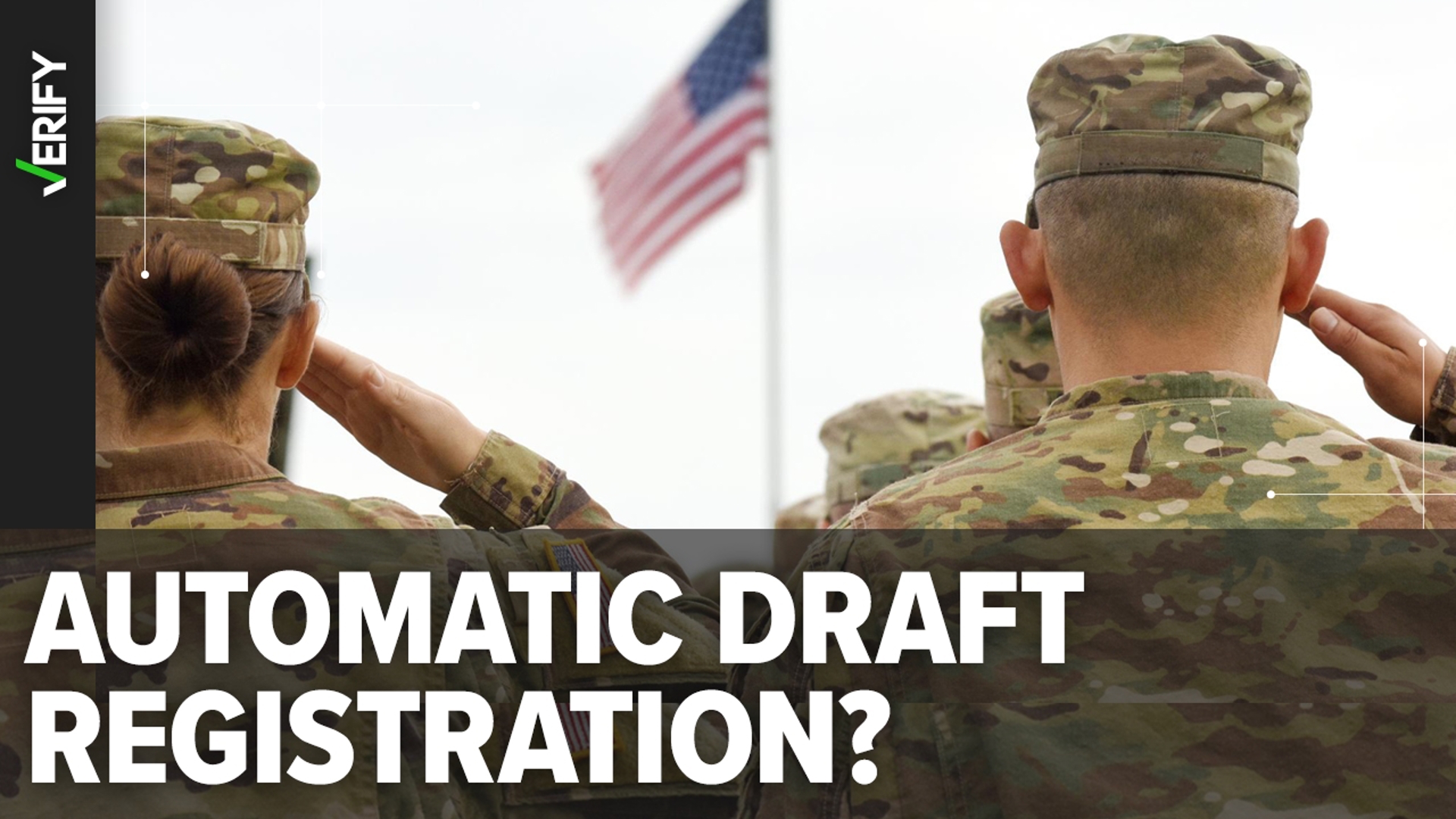Every year, Congress must pass the federal defense policy bill known as the National Defense Authorization Act. The annual bill proposes policy for the Department of Defense and guides the military and national security funding for the next fiscal year.
Before the legislation becomes law, the House and Senate approve and pass their own separate versions of the bill. Then both chambers meet to come up with a compromise version of the legislation that is then voted on and passed. It then goes to the president for his signature.
In June, after the House passed its version of the bill, several social media posts claimed the legislation would automatically register men aged 18 to 26 for the military draft through the Selective Service System. Meanwhile, other people claimed a proposed version of the bill would require women to register for the draft.
Online posts also suggested that if the federal government could automate Selective Service registration, then it could also automate voter registration.
Multiple VERIFY readers, including Jean, want to know what the National Defense Authorization Act actually does.
THE SOURCES
- National Defense Authorization Act for Fiscal Year 2025
- U.S. House Armed Services Committee
- U.S. Senate Committee on Armed Services
- Selective Service System
- Congressional Budget Office
- Congressional Research Service
- National Voter Registration Act of 1993
- National Conference of State Legislatures
- MIT Election Data and Science Lab
- Brennan Center for Justice
- Ballotpedia
- U.S. Rep. Chrissy Houlahan
WHAT WE FOUND
QUESTION #1
Does any version of the bill include a provision that would automate Selective Service registration for men?
THE ANSWER
The House version of the National Defense Authorization Act does include a provision that would automatically register eligible men between the ages of 18 and 26 in the Selective Service System. One of the main functions of the Selective Service System is to maintain a database of registrants in the event of a military draft.
Although the last draft ended over 50 years ago in 1973, a federal law known as the Military Selective Service Act still requires most men who are citizens or legal permanent residents of the United States to register with the Selective Service at age 18, according to the Congressional Research Service.
Currently, almost all Selective Service registrations are completed electronically but registration can also be done at the U.S. Post Office or submitted via paper registration.
Men who fail to register may face certain consequences, including criminal penalties, loss of eligibility for education benefits and some federal or state employment opportunities, and denial of security clearances, the Congressional Research Service explains in a 2021 report.
The Congressional Research Service says 41 states and Washington, D.C., already have legislation that automatically submits Selective Service registration when an eligible person obtains a driver’s license, driver’s permit, or other form of identification at Department of Motor Vehicles locations.
The House version of the defense bill would amend the Military Selective Service Act to automatically register eligible male U.S. citizens and legal permanent residents in the U.S. between the ages of 18 and 26 nationally with no actions required by the person. The provision is not included in the proposed Senate version of the bill.
The Selective Service System notes on its website that a man would not automatically be drafted into the military even though he is registered.
“In a crisis requiring a draft, men would be called in a sequence determined by random lottery number and year of birth. Then, they would be examined for mental, physical, and moral fitness by the military before being deferred or exempted from military service or inducted into the Armed Forces,” the Selective Service System says.
QUESTION #2
Is there a proposal to register women for the draft?
THE ANSWER
The House version of the National Defense Authorization Act has no provisions to require women to register with the Selective Service. However, the proposed Senate version of the bill does amend the Military Selective Service Act to require women to register.
Women in the U.S. have never been required to register for the draft, according to the Congressional Research Service, although there have been multiple proposals over the years to change that.
The Military Selective Service Act, as it is currently written, only authorizes the registration of “male persons.” Congress would have to pass legislation, like what’s in the Senate version of the NDAA, amending the current law for the Selective Service to be authorized to register women.
It’s unclear whether the Senate’s proposal will make it into the final version of the defense bill as some lawmakers, including Sen. Josh Hawley (R-Missouri) and Rep. Chip Roy (R-Texas), have expressed their disapproval of the change.
“I’m not voting for any defense bill that forces my daughter to register for the draft. Not now, not ever,” Hawley recently said on X.
The Senate version of the bill, which includes the provision to require women to register, advanced to the next step after a committee vote on June 14. It will now head to the Senate floor for consideration this summer.
QUESTION #3
Can the federal government automate voter registration?
THE ANSWER
Voter registration for federal, state and local elections is handled at the state level everywhere except North Dakota, which is the only state that does not require people to register to vote.
That means the federal government has no ability to register any voters in the United States.
There is automatic voter registration at the state level in some places.
According to the National Conference of State Legislatures, automatic voter registration (AVR) is a process in which an eligible person is automatically registered to vote when interacting with certain state government agencies, such as the Department of Motor Vehicles, unless they choose to opt out. The information is then transmitted to election officials in the state, who use it to either create a new voter record or update an existing registration.
Oregon and California were the first states to enact AVR in 2015. Now, 24 states and Washington D.C. have enacted AVR policies as of June 2024, according to Ballotpedia.












